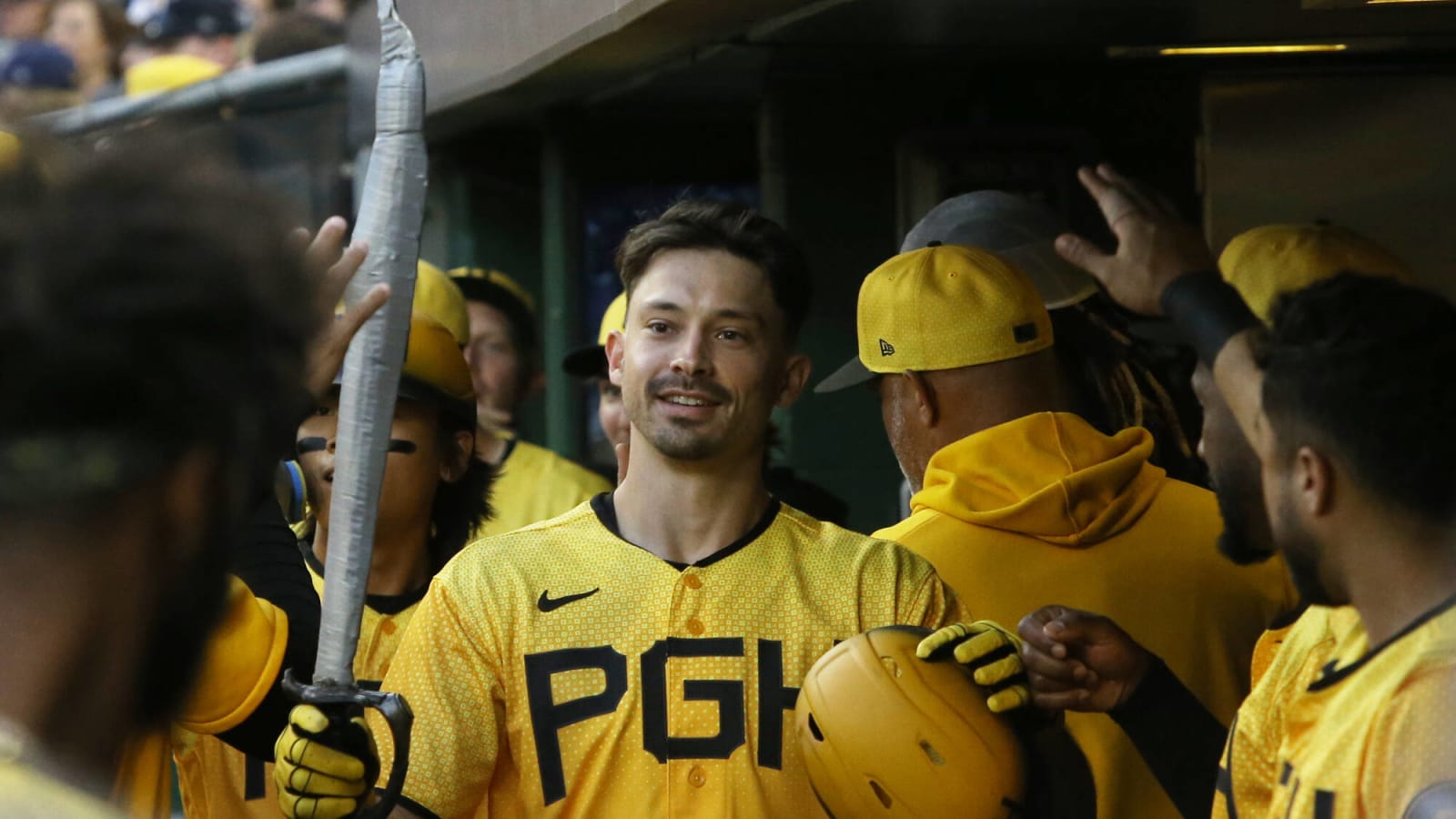
Bryan Reynolds has had a strange couple of years. Between the trade rumors, the trade requests and a franchise-record $106.75 million extension last April, the usually reserved outfielder has been in the public eye quite a lot since 2022.
And through it all, he hasn't been able to quite live up to that monster 2021 season.
We've seen torrid stretches from him these past few years, but after his 6 WAR season in 2021, he dropped to about 3 WAR in 2022 and 2.4 last season, according to Baseball Reference. Defense plays a role in that, but the bat has been the main culprit in that drop. After hitting .302 with a .912 OPS in 2021, that OPS dropped over 100 points to .807 in 2022, and then dipped again last year to .790.
Is he just declining? Probably not. After all, Reynolds' hitting peripherals last year were much better than they were in 2022. One could argue he got better, even if it resulted in fewer bases.
I cited Baseball Savant's expected stats and percentile rankings often in Mound Visit, and while a handful of numbers is never the whole story, it's amazing that Reynolds' peripherals saw a drastic spike while his OPS went down:
— DK Pittsburgh Sports (@DKPSmedia) January 1, 2024
Just to rattle off a few key stats, his average exit velocity went up (90.2 mph to 90.9 mph), his hard-hit rate increased (42.9% to 47.3%), and his expected wOBA jumped over 30 points (.329 to .360). He hit .263 with a .460 slugging percentage last year, but he had a .280 expected batting average and .490 expected slugging percentage. We're talking about a roughly 50 point difference in OPS from what he produced versus what the quality of his at-bats was expected to produce.
You can shrug off last year and just assume Reynolds will bounce back. He has a solid back of the baseball card and was tagging the ball last year, but there is one storm cloud that really hasn't been addressed. There's a good case to be made there, but it's worth diving a bit deeper. Reynolds under-performed compared to his batted ball metrics last year, but he also greatly outpaced his 2022 peripherals.
Look again at those 2022 stats. He was well below average in his chase percentage, chase rate and strikeout percentage. It's no coincidence those three stats were connected. His average exit velocity rose, but he wasn't driving the ball with the same lift he usually does, resulting in fewer barrels and line drives while also increasing his ground ball rate. His fly ball-to-home run ratio was nearly 20%, which saved his OPS because it turned a chunk of 50/50 balls into homers rather than doubles.
Let's ignore the strikeout and walk rates for a bit. Outside of the abbreviated 2020 season, those are usually within arm's length of league average, anyway. How does he strike the ball? Not just his exit velocity, but the quality of the contact. Was it a line drive, a ground ball, a fly ball? Baseball Savant can take a player's contact and weigh what his results are expected to be. I'll take a look at two key stats, his expected batting average on contact (BACON) and his expected wOBA on contact (xwOBACON):
His 2022 season was mighty close to that shortened 2020 season, while those batted ball results weren't too far off from his rookie season and 2021 campaign. He may have slipped a bit in 2022, but that was a nice bounce back, even if it wasn't reflected in his OPS.
So what's the biggest difference between the great Bryan Reynolds and just the good one offensively? Well, it's something he did so well every season besides last season: Hit the fastball.
For most of his career, Reynolds was one of the best fastball hitters in the game. In 2019, he produced 22 more runs over the league average against four-seamers. In 2021 and 2022, he produced 14 runs above average against four-seamers each season. In each campaign, he ranked in the top 25 among all hitters against four-seamers.
Last season, he was worth just one run above average against the four-seamer. If you want a more traditional stat to evaluate his performance, his slugging percentage against four-seamers went from .626 in 2021 to .615 in 2022 to .472 last season.
Interestingly, Reynolds' worst slump last year came in the part of the season when he saw the most fastballs. Now correlation doesn't always mean causation, but if nothing else, Reynolds didn't break out of that cold streak despite seeing the pitch he normally hits the best:
The trade off is Reynolds did better against offspeed and breaking pitches, which made up for the drop against fastballs. He cut down on his chases and whiffs, hit the ball harder and caught the sweet spot of the bat more often. All that translated to a lower OPS.
There are several pathways for Reynolds to have a bounce back year offensively. Either his actual results come closer to his expected results, or he finds his mojo against four-seamers again. Both seem quite possible, and if both end up happening, then that could elevate him back to All-Star form.
More must-reads:
- MLB insider shares if Yankees' Juan Soto could sign extension during season
- Mets' Edwin Diaz addresses status after latest meltdown
- The 'No. 1 overall pick in the MLB Draft' quiz
Breaking News
Customize Your Newsletter
 +
+
Get the latest news and rumors, customized to your favorite sports and teams. Emailed daily. Always free!

